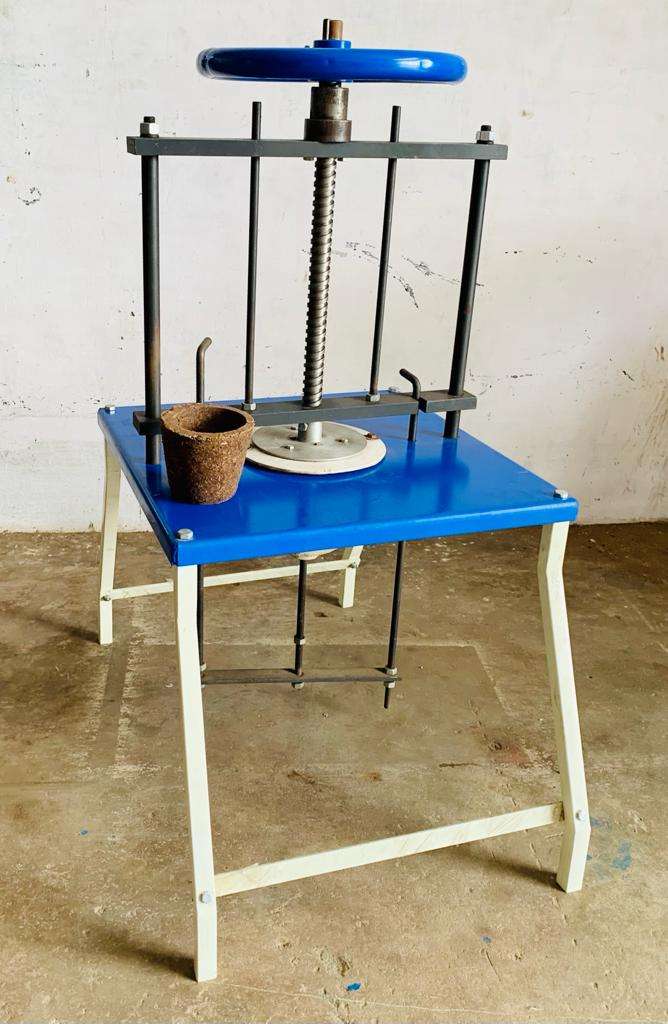
The innovative idea came from Gopal Surtia, who made a crude pot manually. Gopal developed the idea of a cow dung pot machine, and Paresh Panchal was connected with him by the Honey Bee Network to design and modify it. The innovators have used animal manure, locally known as cow dung and wheat flour, in the ratio of 20:1 kg, along with agricultural waste and basic raw materials to prepare eco-friendly pots. Spoiled bajra flowers or shells of caster leaves or neem leaves were used in the mixture to protect the pot from pest attacks, as they have insecticidal properties that prevent termite attacks. The innovation is biodegradable and eco-friendly. The leaching of nutrients is prevented as the water absorption rate of the pot is very slow. It has advantages such as faster growth of the plant as it is made of cow dung, and employment generation is possible through local manufacturing and sourcing of these cow dung pots. This innovation of garden pot-making machines has employed jail inmates. It was successfully incorporated by Dharamshala prison. The forest departments and prisons of many states in India are using it. It won many awards and was showcased at Rashtrapati Bhavan at the festival of innovation by the Honey Bee Network and the National Innovation Foundation.


